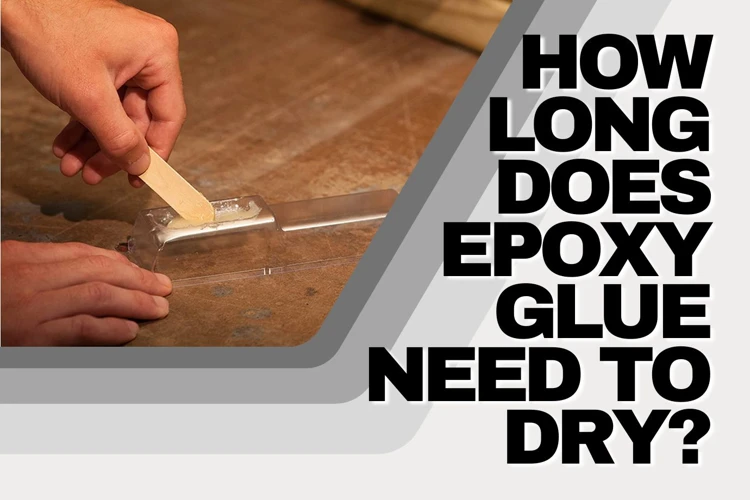The longevity of epoxy glue, or epoxy adhesive durability, is a subject of interest for both DIY enthusiasts and professional constructors alike. Understanding the lifespan of this versatile adhesive not only ensures successful projects but also maximizes the value of your investment in materials.
Epoxy Glue Shelf Life
Before delving into the actual usage, it’s crucial to address the epoxy glue shelf life. Typically, epoxy resins can last anywhere from one to two years if unopened and stored correctly. However, once the components are mixed, the clock starts ticking, and you must use the adhesive within a specified timeframe, usually a few hours.
Factors Impacting Epoxy Adhesive Durability
Several key factors influence the durability of epoxy adhesives. These include the quality of the surface preparation, the correct ratio of resin to hardener, and the environmental conditions during application and curing. Meticulous attention to these details ensures the highest performance of your adhesive.
Maximizing Epoxy Bond Strength Over Time
To achieve epoxy bond strength over time, it’s essential to take proactive steps. The durability of your project hinges on the integrity of the bond formed between the epoxy and the substrates.
Preventing Contamination
Contamination is a significant enemy of epoxy adhesives. Whether it’s dust, oils, or any other foreign substance, contamination can weaken the bond. Always clean and, if necessary, sand the surfaces before applying epoxy glue to prevent this pitfall.
Proper Storage Practices for Long-lasting Epoxy Resin
For a long-lasting epoxy resin, store your materials in a cool, dry place away from sunlight and extreme temperatures. Make sure the caps are tightly sealed to prevent moisture ingress, which can compromise the quality of the components.
Industrial Epoxy Adhesive Life
In the industrial realm, the life expectancy of epoxy adhesives can be a determining factor in the maintenance and durability of equipment and structures.
Comparing Different Brands and Types
Not all epoxies are created equal. The industrial epoxy adhesive life can vary significantly between brands and types. Some formulations are designed for exceptional thermal resistance, while others prioritize flexibility or speed of curing.
Industrial Applications and Epoxy Longevity
Industrial applications often demand adhesives that can withstand harsh conditions. Factors such as constant vibrations, heavy loads, and exposure to chemicals can impact epoxy longevity. Choosing the right product for specific conditions is paramount.
Environmental Influence on Epoxy Glue
The environment plays a crucial role in the performance of epoxy adhesives. From temperature swings to moisture exposure, understanding these influences helps ensure the longevity of your applications.
Temperature Effects on Epoxy Glue
Temperature effects on epoxy glue are notable. Extreme temperatures, both high and low, can affect the curing process and final properties of the epoxy. It’s important to apply and cure epoxy within the temperature ranges specified by the manufacturer.
Waterproof Epoxy Adhesive Longevity
Waterproof epoxy adhesive longevity is a common concern, especially in outdoor or marine applications. Quality waterproof epoxies are formulated to resist water ingress, which can otherwise lead to bond failure over time.
Epoxy Glue Application and Curing
The application and curing stages are critical to the final strength and endurance of an epoxy adhesive.
Curing Time and Epoxy Glue Endurance
Curing time and epoxy glue endurance are directly related. The full curing process, which can take several days, allows the adhesive to reach its maximum strength and chemical resistance. Rushing this process can lead to suboptimal performance.
Best Practices for Application
For an optimal bond, ensure that the application follows best practices. This includes precise measuring and mixing, avoiding air bubbles, and applying the right amount of epoxy. Using the correct tools and techniques can make a significant difference in the outcome.
Epoxy Glue Usage Tips
Getting the most out of your epoxy adhesive involves more than just good application practices.
How to Extend the Life of Your Epoxy Adhesive
Here are some tips to extend the life of your epoxy adhesive:
- Follow the manufacturer’s instructions for mixing and curing.
- Only mix as much epoxy as you can use within its pot life.
- Protect the bond from stress and environmental factors during the curing period.
Troubleshooting Common Epoxy Issues
If you encounter issues such as weak bonds or surface imperfections, consider the following:
- Review your surface preparation routine.
- Check the mix ratio and thoroughly mix the components.
- Ensure the application environment matches the manufacturer’s recommendations.
When it comes to adhesives, the longevity and durability can vary widely depending on the type of glue you’re using. If you’re curious about the lifespan of various adhesives, you might want to explore the durability of different glues. For instance, our article on how long hot glue lasts can give you insights into the world of thermoplastic adhesives. Similarly, for those interested in nail adhesives, our discussion on how long KDS nail glue lasts can provide valuable information. And if you’re working with wood or paper, understanding how long PVA glue lasts could be crucial for your projects. As for epoxy glue, recognized for its strong bond and chemical resistance, we will delve into its lifespan and factors affecting its durability in our comprehensive guide on ‘How Long Does Epoxy Glue Last.’
Final Thoughts on Epoxy Adhesive Longevity
In conclusion, the epoxy glue lifespan can be maximized through careful selection, proper preparation, and adherence to best practices. By understanding the factors that affect epoxy adhesive durability, you can ensure long-lasting bonds that stand the test of time. Always remember that patience and attention to detail during the application and curing processes are key to achieving the full potential of your adhesive’s performance.
